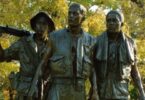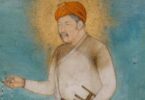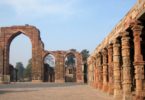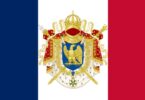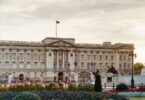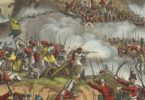During which century did the Spanish Empire reach its height of power and influence?
(a) 14th century
(b) 16th century
(c) 18th century
(d) 20th century
What was the primary purpose of the Council of the Indies?
(a) To oversee the Inquisition
(b) To manage the Monarchy’s overseas territories
(c) To control trade with Asia
(d) To govern the Spanish mainland
Which explorer is famous for discovering the Pacific Ocean in 1513 while crossing the Isthmus of Panama?
(a) Christopher Columbus
(b) Ferdinand Magellan
(c) Hernán Cortés
(d) Vasco Núñez de Balboa
What was the primary goal of Spanish exploration in North America during the 16th century?
(a) To find a northwest passage to Asia
(b) To establish permanent colonies for agricultural production
(c) To search for mythical cities of gold
(d) To establish diplomatic relations with Native American tribes
Which economic system was prevalent in the Spanish Empire during the colonial period?
(a) Mercantilism
(b) Capitalism
(c) Feudalism
(d) Socialism
When did the Spanish Crown issue the “Laws of the Indies,”?
(a) 1519
(b) 1681
(c) 1776
(d) 1542
Which region of the Spanish Empire was known for its vast silver mines?
(a) Mexico
(b) Oman
(c) Mongolia
(d) Singapore
Which conquistador is famous for leading the expedition that resulted in the capture of the Inca Empire?
(a) Ferdinand Magellan
(b) Hernán Cortés
(c) Francisco Pizarro
(d) Christopher Columbus
Which event marked the beginning of Spain’s overseas exploration?
(a) The Reconquista
(b) The Battle of Lepanto
(c) The Treaty of Tordesillas
(d) The Fall of Granada
What was the Treaty of Tordesillas, signed in 1494?
(a) Division of Africa between Spain and Portugal
(b) Division of the New World (Americas) between Spain and Portugal
(c) Division of Asia between Spain and Portugal
(d) Division of Europe between Spain and Portugal
Who is credited with sponsoring Christopher Columbus’s voyage to the Americas in 1492?
(a) Ferdinand II of Aragon
(b) Isabella I of Castile
(c) Charles V
(d) Philip II
Which two powerful European monarchies were united through the marriage of Isabella I of Castile and Ferdinand II of Aragon?
(a) France and Denmark
(b) Portugal and Finland
(c) The Netherlands and Hungary
(d) Castile and Aragon
Which strait, named after a Portuguese explorer, served as a critical maritime route for Spanish galleons traveling between the Atlantic and Pacific Oceans during the colonial era?
(a) Magellan Strait
(b) Bering Strait
(c) Suez Strait
(d) Gibraltar Strait
Which Spanish explorer is known for leading the first European expedition to Florida in 1513?
(a) Hernán Cortés
(b) Francisco Pizarro
(c) Christopher Columbus
(d) Juan Ponce de León
Which explorer is famous for his exploration of the southwestern United States?
(a) Hernando de Soto
(b) Juan Rodríguez Cabrillo
(c) Francisco Vázquez de Coronado
(d) Álvar Núñez Cabeza de Vaca
Which region of the Americas was Columbus exploring when he first reached the New World during his 1492 voyage?
(a) The Caribbean
(b) South America
(c) North America
(d) Central America
The Hispanic Monarchy reached its peak during the reign of which Habsburg monarch?
(a) Philip II
(b) Charles V
(c) Ferdinand VII
(d) Isabella II
The Spanish Armada was defeated by which country in 1588?
(a) Japan
(b) England
(c) Belgium
(d) Germany
What literary work is often considered one of the most outstanding achievements of Spanish literature?
(a) “The Divine Comedy” by Dante Alighieri
(b) “War and Peace” by Leo Tolstoy
(c) “Don Quixote” by Miguel de Cervantes
(d) “Pride and Prejudice” by Jane Austen
The War of the Spanish Succession (1701-1714) was primarily fought over which European throne?
(a) French throne
(b) Austrian throne
(c) English throne
(d) Dutch throne
Which famous palace near Madrid was built during The Golden Age of the Spanish Empire?
(a) Alhambra
(b) Versailles
(c) Windsor Castle
(d) Escorial Palace
Which conflict in the early 19th century saw the Spanish Empire engaged in a series of wars for independence in its American colonies, ultimately leading to the loss of most of its American territories?
(a) The Napoleonic Wars
(b) The Peninsular War
(c) The Spanish-American War
(d) The Latin American Wars of Independence
During the Age of Exploration, which two European empires were the primary competitors for overseas territories and trade routes?
(a) French Empire and British Empire
(b) Ottoman Empire and Roman Empire
(c) Spanish Empire and Portuguese Empire
(d) Russian Empire and Chinese Empire
What labor system was used in Spanish colonies, where indigenous peoples were forced to work on Spanish-owned plantations and mines?
(a) Capitalism
(b) Feudalism
(c) Serfdom
(d) Encomienda
Which South American revolutionary leader was vital in the independence movements against Spanish rule?
(a) Simón Bolívar
(b) Hernán Cortés
(c) Francisco Pizarro
(d) Christopher Columbus
What year is generally recognized as the official end of the Spanish Empire?
(a) 1492
(b) 1821
(c) 1898
(d) 1812
Related: Adolf Hitler Quiz
Who was the Spanish explorer known for his first voyage around the world?
(a) Christopher Columbus
(b) Ferdinand Magellan
(c) Hernán Cortés
(d) Francisco Pizarro
Which Empire was known for its dominance in the Indian Ocean trade routes?
(a) British Empire
(b) Ottoman Empire
(c) Dutch Empire
(d) French Empire
Which conquistador led the expedition that resulted in the conquest of the Aztec Empire?
(a) Christopher Columbus
(b) Ferdinand Magellan
(c) Hernán Cortés
(d) Francisco Pizarro
Related: MCQs on The Vietnam War (1955-1975)
In what year did Spain officially cede control of Florida to the United States through the Adams-Onís Treaty?
(a) 1492
(b) 1776
(c) 1819
(d) 1898
What precious metal was primarily responsible for the economic prosperity of the Spanish Empire?
(a) Copper
(b) Gold
(c) Silver
(d) Iron
Which present-day country was called “New Spain”?
(a) Mexico
(b) Brazil
(c) Argentina
(d) Colombia

